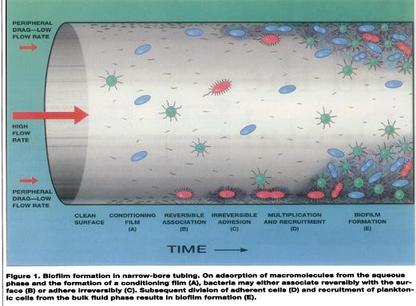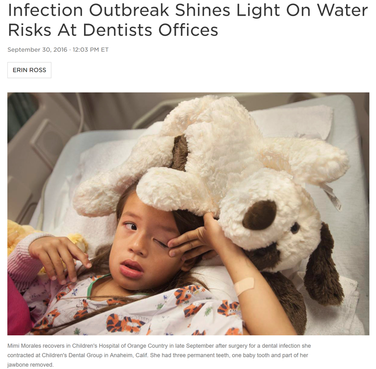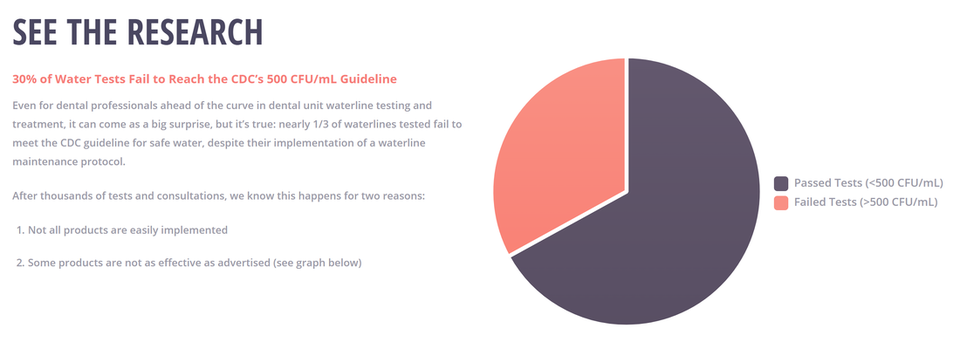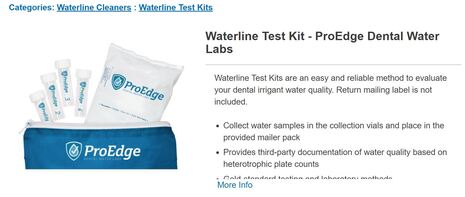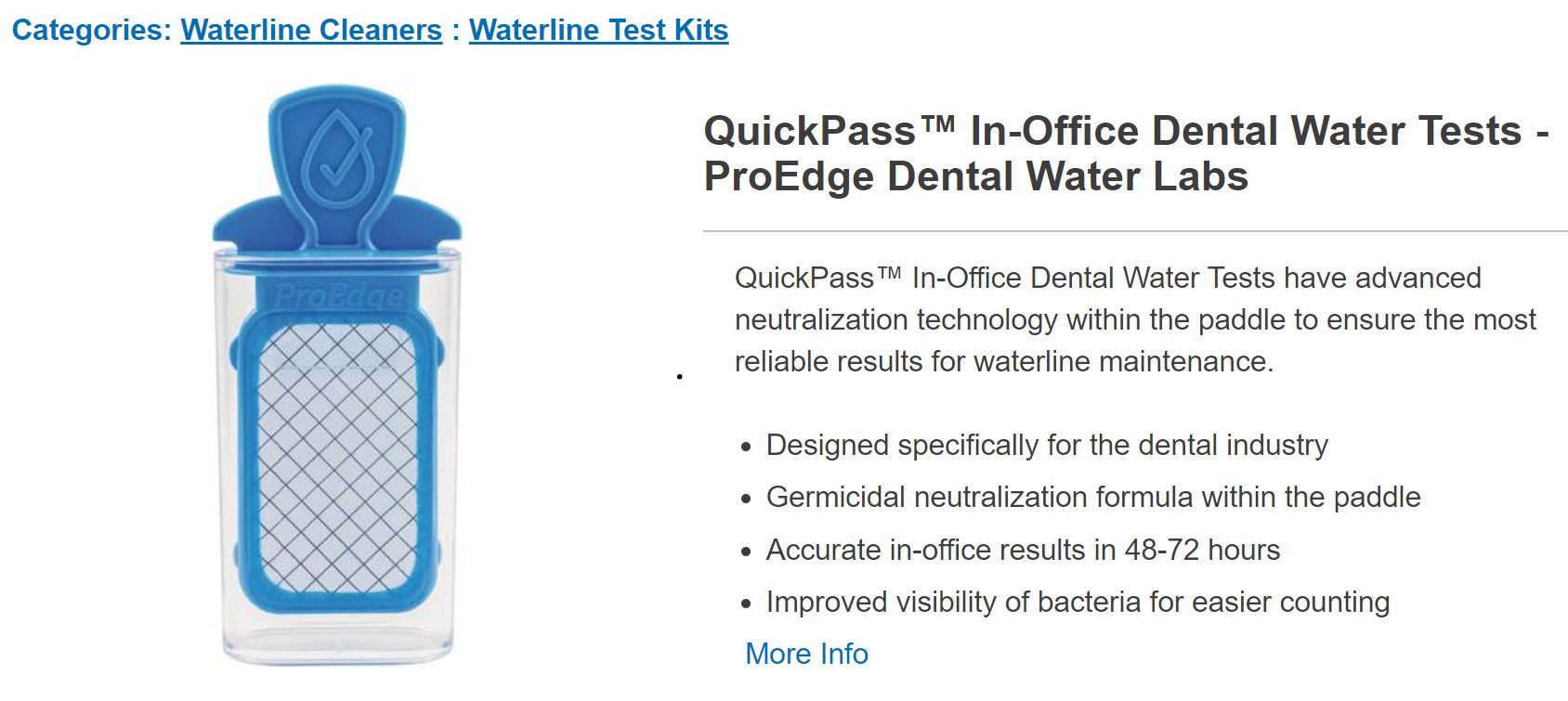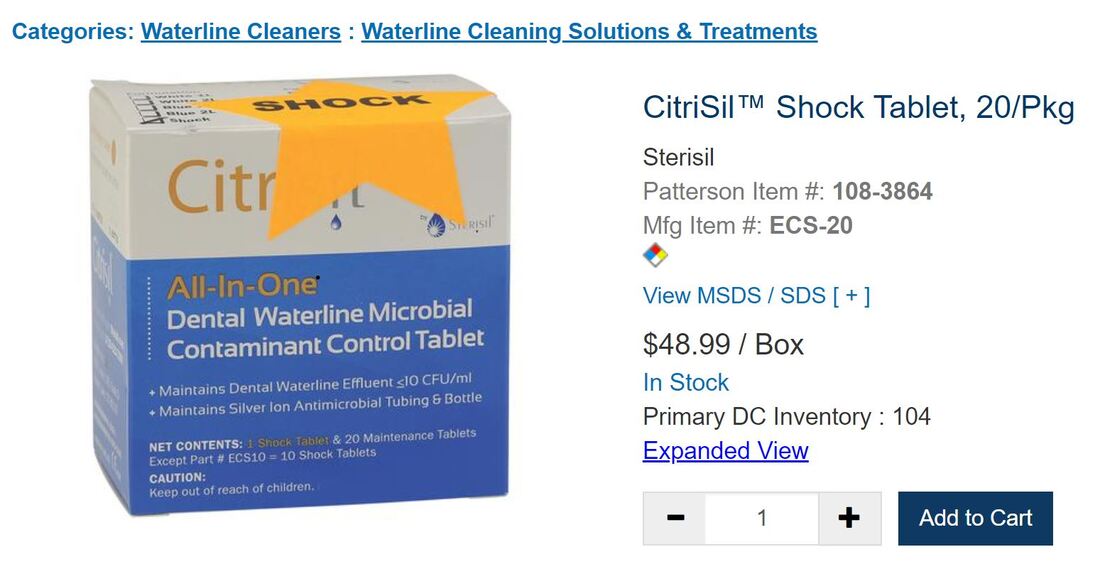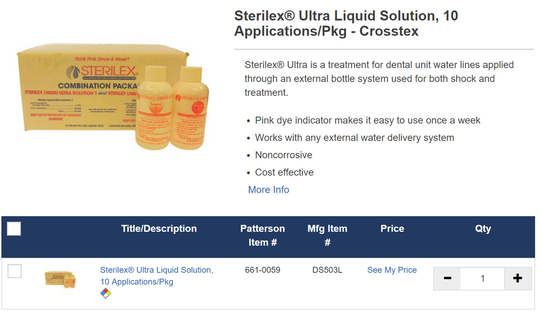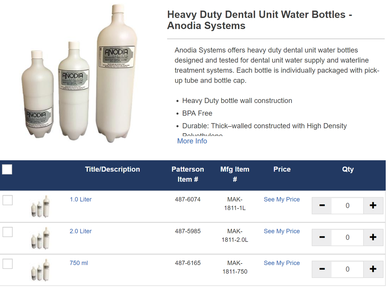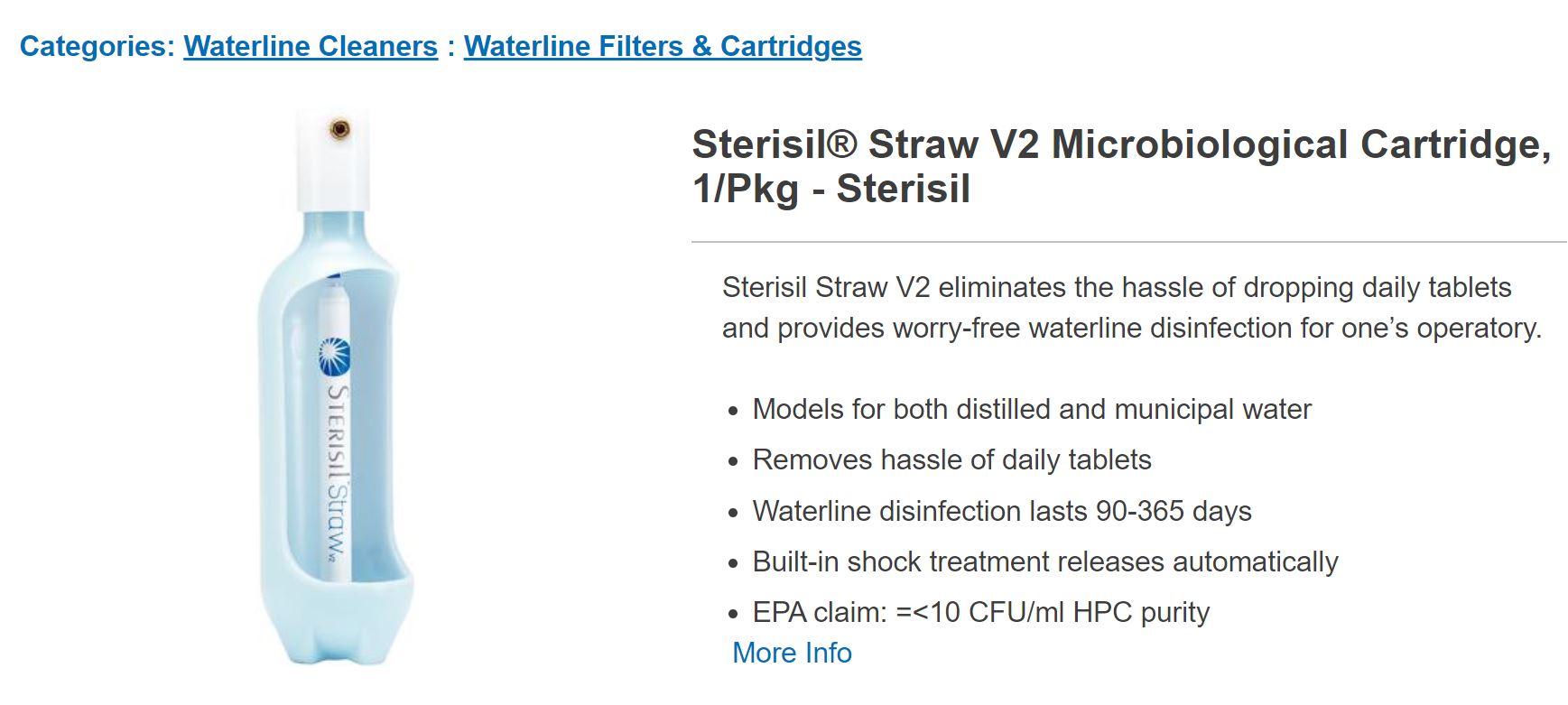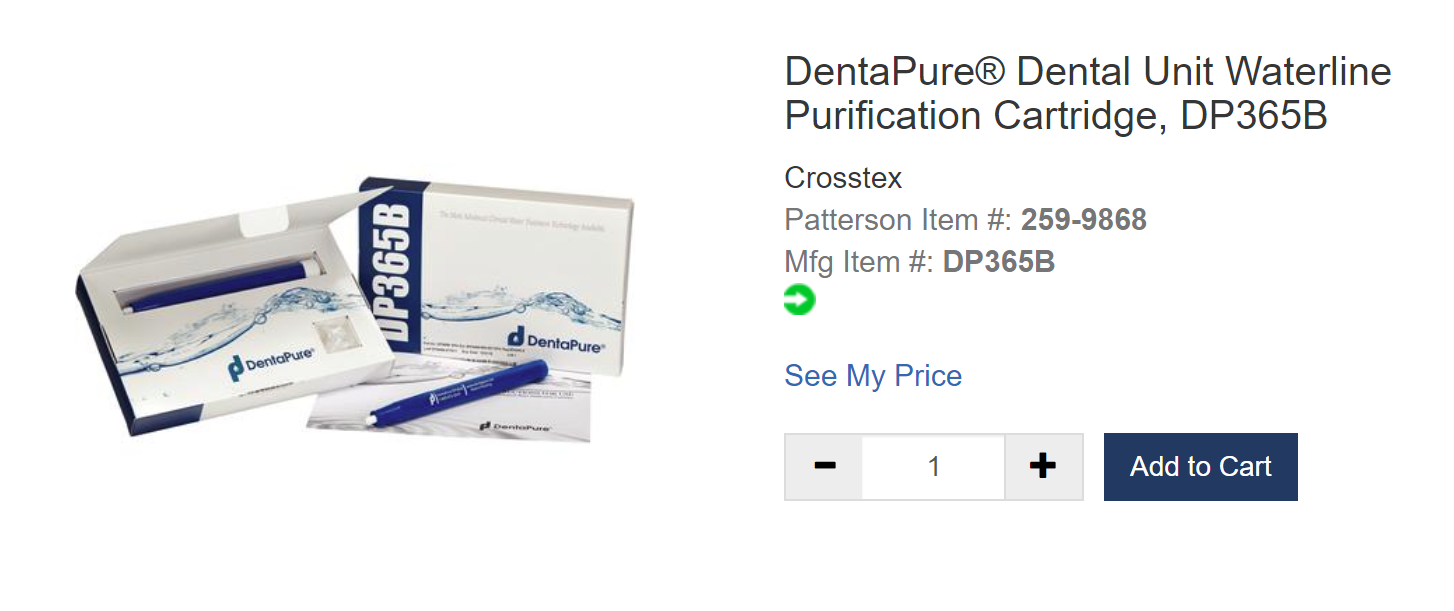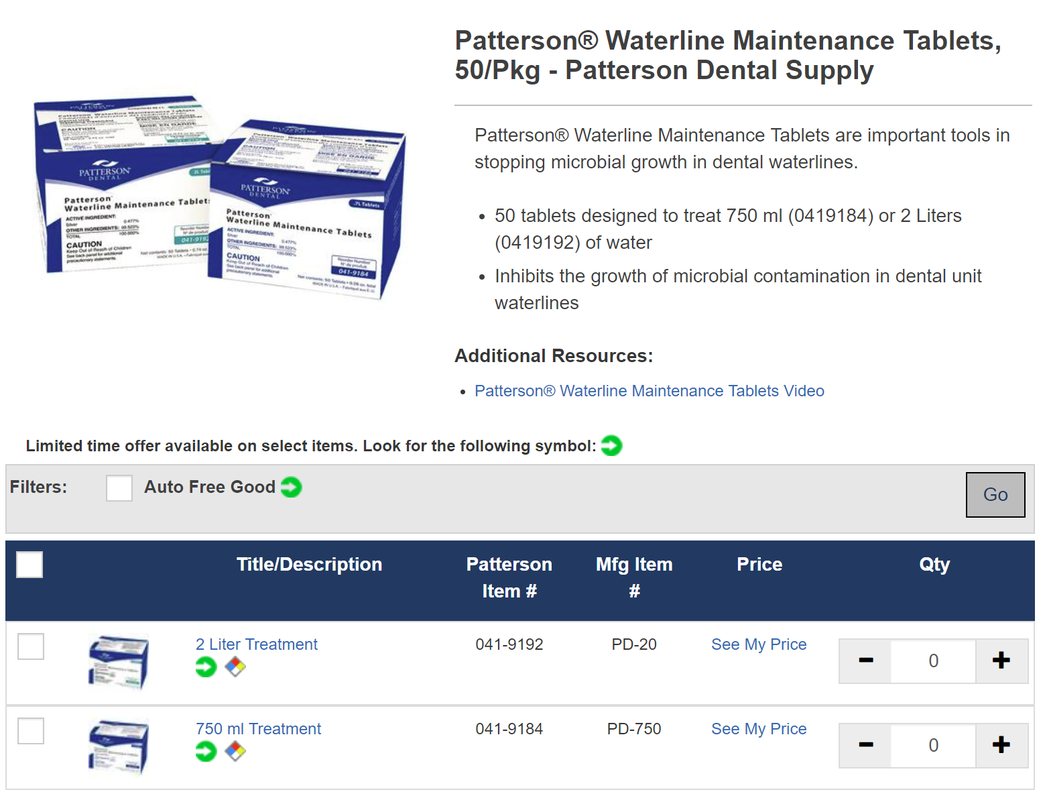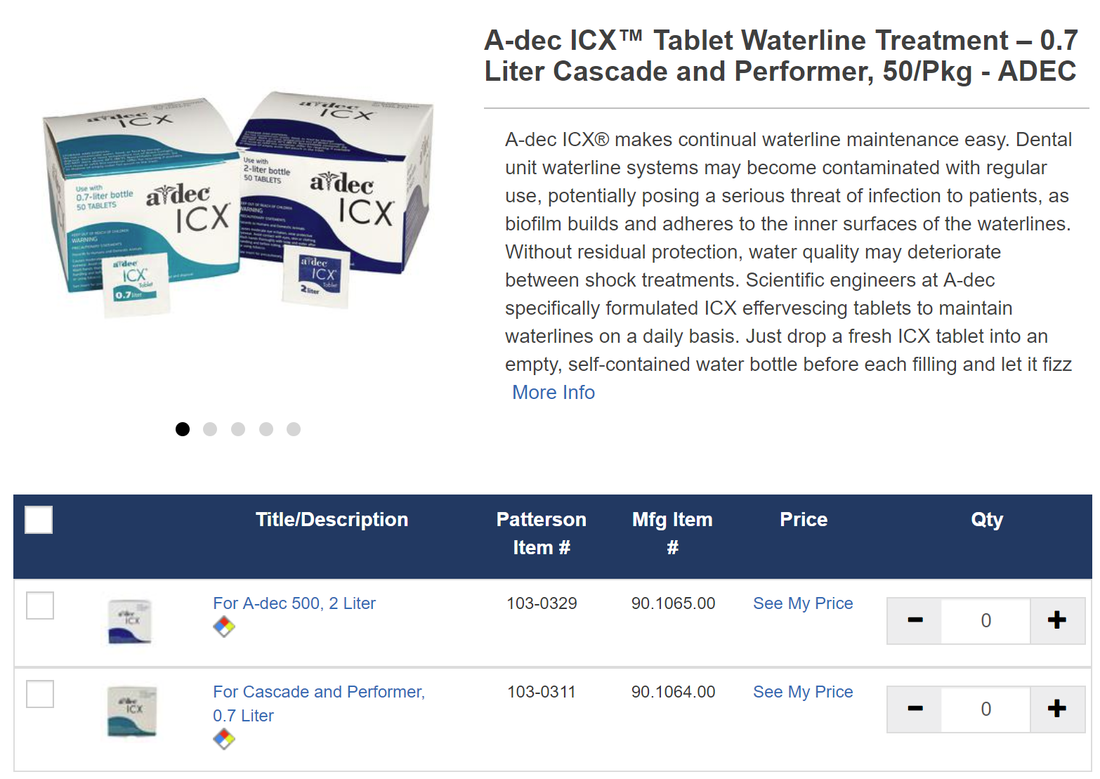Your browser does not support viewing this document. Click here to download the document.
water Line maintenace
|
BIOFILM, WHAT IS IT?
Biofilm—a coating of microorganisms—can develop in dental unit waterlines (the tubes connecting instrumentation such as high-speed handpieces, air/water syringes and ultrasonic scalers with a water supply). To deliver water of optimal microbiologic quality, dental unit waterlines must be maintained regularly. Colonization of microorganisms within the waterlines may not pose a concern for healthy individuals, but it may place elderly or immunocompromised patients at unnecessary risk. |
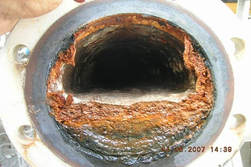
CDC GUIDELINE - < 500cfu of bacteria
The Centers for Disease Control and Prevention (CDC) recommends that dental unit water used in non-surgical procedures measure ≤500 CFU/mL.2 This is the standard set for drinking water by the Environmental Protection Agency (EPA).2 To deliver water of this quality, dental unit waterline systems designed for general dental practice must be regularly maintained, via water treatment and monitoring, performed according to the manufacturer’s instructions.
The Centers for Disease Control and Prevention (CDC) recommends that dental unit water used in non-surgical procedures measure ≤500 CFU/mL.2 This is the standard set for drinking water by the Environmental Protection Agency (EPA).2 To deliver water of this quality, dental unit waterline systems designed for general dental practice must be regularly maintained, via water treatment and monitoring, performed according to the manufacturer’s instructions.
|
WHAT ARE THE RISKS OF BIOFILM
7 Year old Mimi Morales recovers in Children's Hospital of Orange Country in late September after surgery for a dental infection she contracted at Children's Dental Group in Anaheim, Calif. She had three permanent teeth, one baby tooth and part of her jawbone removed. (CLICK IMAGE TO RIGHT FOR FULL STORY) |
water line maintenance protocol
There is a 3 step process that I recommend to ensure you are maintaining your water lines in order achieve the ADA/CDC standard of ≤500 CFU/mL.2.
Step 1: Water quality testing
Step 2: Waterline shock treatment
Step 3: Waterline maintenance
In addition I recommend keeping a log of your water line maintenance protocol, this will ensure you are doing each step on a regular schedule.
Step 1: Water quality testing
Step 2: Waterline shock treatment
Step 3: Waterline maintenance
In addition I recommend keeping a log of your water line maintenance protocol, this will ensure you are doing each step on a regular schedule.
STEP 1: WATER QUALITY TESTING
The first step is testing your waterlines, this is the most important part of the process. You must have a baseline to know how to proceed. If you have achieved the level of <500cfu, then you know you are on the right track, keep following the maintenance steps below. If you have a failed test higher than the 500cfu level, then you must shock your lines in any failed units and then retest until you have achieved <500cfu. Failed tests are common, 30% of all water tests fail.
The first step is testing your waterlines, this is the most important part of the process. You must have a baseline to know how to proceed. If you have achieved the level of <500cfu, then you know you are on the right track, keep following the maintenance steps below. If you have a failed test higher than the 500cfu level, then you must shock your lines in any failed units and then retest until you have achieved <500cfu. Failed tests are common, 30% of all water tests fail.
WATER TESTING KITS
CLICK PRODUCT IMAGES TO BE REDIRECTED
CLICK PRODUCT IMAGES TO BE REDIRECTED
STEP 2: WATERLINE SHOCK TREATMENT
Once you have tested your water, shocking your waterlines is the first critical cleaning step! I find that in most offices this step is NOT done, yet it is the most important. Shocking the lines KILLS the bacteria and CLEANS out the lines. Most offices skip this and go right to tablets, tablets ONLY maintain clean water lines. Below are a couple options for shocking along with the item numbers to order through Patterson. Follow the instructions on the label, the product must sit in the lines overnight and be completely flushed out the next day, repeat this process as needed, especially if you have failed a test. I would also consider replacing your water bottles to get a fresh start.
Note, Citrisil can be used through the Sterisil straw, if using another shock you will need a dummy straw!
Once you have tested your water, shocking your waterlines is the first critical cleaning step! I find that in most offices this step is NOT done, yet it is the most important. Shocking the lines KILLS the bacteria and CLEANS out the lines. Most offices skip this and go right to tablets, tablets ONLY maintain clean water lines. Below are a couple options for shocking along with the item numbers to order through Patterson. Follow the instructions on the label, the product must sit in the lines overnight and be completely flushed out the next day, repeat this process as needed, especially if you have failed a test. I would also consider replacing your water bottles to get a fresh start.
Note, Citrisil can be used through the Sterisil straw, if using another shock you will need a dummy straw!
STEP 3: WATERLINE MAINTENANCE
Once you have thoroughly shocked your waterlines you must maintain them on a daily basis with either tablets or straws. Below I have listed a few of the popular options for both options. Note, one of the nice features of the Sterisil Straw is that it has a built in shock the first time you use it. It's probably not strong enough on its own after a failed test, I'd recommend Step 2 shock, but after you have a positive test you can use the built in shock.
Once you have thoroughly shocked your waterlines you must maintain them on a daily basis with either tablets or straws. Below I have listed a few of the popular options for both options. Note, one of the nice features of the Sterisil Straw is that it has a built in shock the first time you use it. It's probably not strong enough on its own after a failed test, I'd recommend Step 2 shock, but after you have a positive test you can use the built in shock.
DISCLAIMER: all information on this page comes from my experience and is by no means the "standard" protocol since there is no one standard protocol in the industry, other than the <500cfu level. I have not had my team of lawyers ; ) review my recommendations on this page, so if you are looking for a more "official" resource please refer to the ADA website! www.ada.org/en/member-center/oral-health-topics/dental-unit-waterlines
